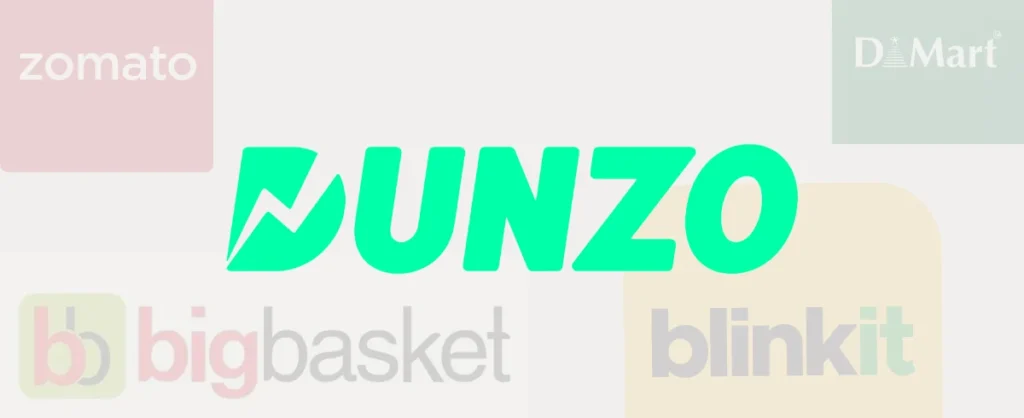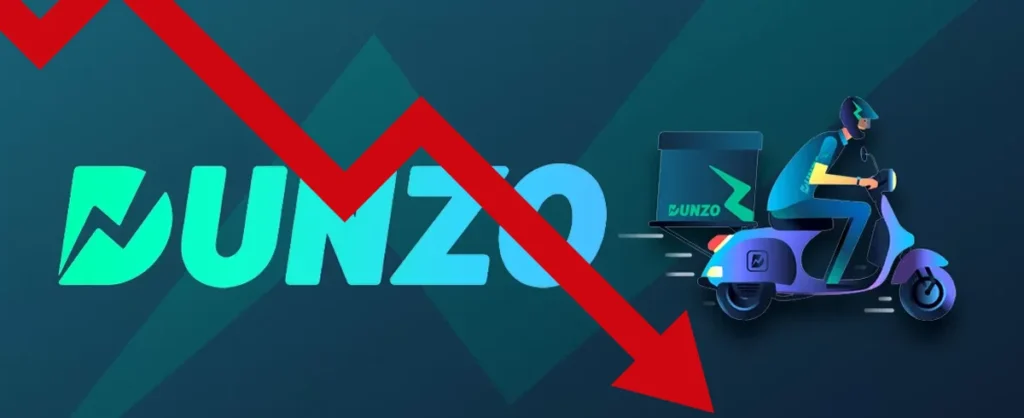Necessary Always Active
Necessary cookies are required to enable the basic features of this site, such as providing secure log-in or adjusting your consent preferences. These cookies do not store any personally identifiable data.
|
||||||
|
||||||
|
||||||
|

Dunzo emerged as one of India’s first hyperlocal delivery platforms, promising to fulfill any task within a city through its network of delivery partners. Founded in 2015, the Bengaluru-based startup initially positioned itself as a personal assistant service that could pick up anything from groceries to documents, medicines to food, delivering them directly to customers’ doorsteps. At its peak, Dunzo became synonymous with convenience and instant gratification, capturing the imagination of urban consumers and investors.
The story of Dunzo serves as a critical case study in the Indian startup ecosystem, illustrating both the potential and pitfalls of hyperlocal delivery models. It demonstrates how early innovation and market leadership can be quickly eroded by fierce competition, unsustainable unit economics, and strategic missteps. For businesses operating in fast-evolving markets, Dunzo’s trajectory offers invaluable lessons about the importance of sustainable growth, operational efficiency, and the delicate balance between customer acquisition and profitability.
Dunzo was founded in 2015 by Kabeer Biswas, along with co-founders Ankur Aggarwal, Dalvir Suri, and Mukund Jha. Kabeer Biswas, who previously worked at Myntra and had entrepreneurial experience, identified a significant gap in the Indian market for on-demand, hyperlocal services. The founding team recognized that urban consumers increasingly valued convenience and were willing to pay for services that saved them time and effort.
The company launched its minimum viable product (MVP) in Bengaluru, initially operating as a WhatsApp-based service where customers could request almost anything to be picked up and delivered. This approach allowed the founders to test their hypothesis with minimal infrastructure investment while gathering crucial user feedback. The MVP focused on understanding customer behavior, delivery patterns, and operational challenges without the burden of a complex technology platform.
Early traction in Bengaluru was promising, with users appreciating the flexibility and convenience of the service. The initial product-market fit was evident as customers began using Dunzo for diverse tasks – from picking forgotten keys to delivering birthday cakes, from pharmacy runs to grocery shopping. This strong user feedback loop helped the team fine-tune their service offerings and naviate through the complexities of hyperlocal delivery logistics. The early success validated their assumption that Indian consumers were ready to embrace on-demand delivery services beyond traditional food delivery platforms.
Recognizing the limitations of their initial chat-based model, Dunzo pivoted to become a comprehensive hyperlocal delivery platform with a dedicated mobile application. This strategic shift expanded their service offerings to include grocery delivery, medicine delivery, food delivery, and even business-to-business logistics solutions. The platform positioned itself as the ultimate convenience partner, capable of handling any errand within city limits.
The company’s growth trajectory accelerated significantly with strategic funding rounds that brought credible investors to the table. Google’s investment in Dunzo marked a significant milestone, providing not just capital but also technological expertise and credibility in the market. Subsequently, Reliance Retail’s investment further strengthened Dunzo’s position, offering potential synergies with India’s largest retail network. These funding rounds enabled rapid expansion and technological development, allowing Dunzo to scale operations across multiple cities.
Expansion beyond Bengaluru was systematic and data-driven, with Dunzo entering Delhi, Mumbai, Chennai, Pune, and other major metropolitan areas. Each market entry was accompanied by localized marketing campaigns and partnerships with local merchants and service providers. The company’s ability to maintain service quality while scaling operations made it a household name among urban consumers who increasingly relied on the platform for daily necessities.
Dunzo for Business represented the company’s attempt at diversification, offering B2B logistics solutions for enterprises and small businesses. This vertical aimed to leverage Dunzo’s last-mile delivery expertise to serve corporate clients, potentially creating a more stable revenue stream compared to the volatile consumer market. The B2B arm focused on document delivery, inventory management, and supply chain solutions for businesses lacking their own logistics infrastructure.
Dunzo’s revenue model was multifaceted, generating income through delivery fees, commission from partner merchants, subscription services, and advertising revenue from brands featured on the platform. The company charged customers a delivery fee for each order while simultaneously collecting commissions from restaurants, grocery stores, and other merchants for facilitating sales through their platform. Additionally, Dunzo Pro, their subscription service, offered unlimited free deliveries for a monthly fee, creating a predictable revenue stream.
The operational structure relied heavily on a gig economy model with independent delivery partners using their own vehicles like motorcycles and bicycles. This asset-light approach minimized capital expenditure while enabling rapid scaling. The company also experimented with dark stores, micro-fulfillment centers stocked with popular items to reduce delivery times and improve operational efficiency. These dark stores were strategically located to serve high-demand areas within an optimal delivery radius.
However, unit economics remained a persistent challenge throughout Dunzo’s growth phase. The cost of acquiring customers, maintaining delivery partners, and ensuring fast delivery times often exceeded the revenue generated per transaction. The company’s average order value was typically lower than food delivery platforms, making it difficult to achieve profitability at the unit level. Scalability challenges emerged as operational complexity increased with geographic expansion, requiring sophisticated logistics management and inventory optimization systems.
The last-mile delivery model, while customer-friendly, proved expensive to maintain at scale. Unlike traditional e-commerce companies that could optimize deliveries through bulk shipments and planned routes, Dunzo’s on-demand model required immediate response times and flexible routing, significantly increasing operational costs. Weather dependencies, traffic conditions, and delivery partner availability further complicated the operational framework.

The hyperlocal delivery landscape underwent dramatic transformation with the entry of well-funded competitors like Blinkit, Swiggy Instamart, and Zepto. These platforms introduced the concept of quick commerce, promising deliveries within 10-30 minutes for essential items. This shift fundamentally changed consumer expectations, with speed becoming the primary differentiator rather than convenience or variety.
Blinkit’s focus on groceries and essentials with ultra-fast delivery times directly challenged Dunzo’s market position. Swiggy Instamart leveraged Swiggy’s existing delivery network and customer base to rapidly scale their quick commerce operations. Zepto’s venture capital backing and aggressive expansion strategy further intensified competition. These competitors often had deeper pockets and more focused business models, enabling them to sustain longer periods of cash burn while building market share.
The quick commerce revolution changed the fundamental value proposition of hyperlocal delivery. Customers who were previously satisfied with 60–90-minute deliveries began expecting 10-minute deliveries for groceries and essentials. This shift forced Dunzo to compete on metrics where they were not structurally advantaged, as their diverse service offerings made it challenging to optimize specific delivery times across all categories.
Strategic misalignments became apparent as Dunzo struggled to position itself effectively against these focused competitors. The company’s strength in handling diverse tasks became a weakness in a market increasingly optimized for specific use cases like grocery delivery or food delivery.
Pricing wars became inevitable as platforms competed for market share through heavy discounts and promotional offers. The race to the bottom on delivery fees and product prices has already squeezed thin margins, making sustainable operations even more challenging. Dunzo found itself caught between maintaining service diversity and competing on speed and price with more specialized platforms.

Despite multiple funding rounds, Dunzo began experiencing significant financial pressure as growth targets remained elusive, and cash burn accelerated. The company consistently missed revenue projections and user acquisition goals, while operational costs continued rising with scale. Investor confidence began wavering as unit economics showed little improvement despite increased volumes and operational optimizations.
The financial strain manifested in several concerning ways. Reports emerged of delayed salary payments to employees, creating internal morale issues and talent retention challenges. Vendor payments were increasingly delayed, straining relationships with partner merchants and service providers who formed the backbone of Dunzo’s ecosystem. These operational challenges created a negative feedback loop, affecting service quality and customer satisfaction.
Multiple layoff rounds became necessary as the company attempted to align its cost structure with available capital and revenue projections. These workforce reductions impacted both operational capabilities and company culture, as remaining employees faced increased workloads and uncertainty about the company’s future. The layoffs also reduced Dunzo’s ability to innovate and compete effectively in a rapidly evolving market.
Fundraising became increasingly difficult as investors became more cautious about unit economics and profitability timelines. The broader startup ecosystem’s shift toward sustainable growth over rapid scaling made it challenging for companies like Dunzo to raise capital on favorable terms. Failed attempts to secure adequate funding put additional pressure on the company’s operational capabilities.
Dunzo for Business, despite the initial promise, failed to generate significant revenue or achieve the scale necessary to offset losses from the consumer business. The B2B arm struggled with customer acquisition and retention, while the operational complexity of serving both consumer and business markets stretched the company’s resources thin.
Recognizing the unsustainable nature of their operations, Dunzo made the difficult decision to shut down Dunzo Daily, their grocery delivery vertical, which directly competed with better-funded quick commerce platforms. This strategic retreat represented a significant shift from their previous expansion-focused approach to a survival-oriented strategy centered on core competencies.
Geographic retrenchment followed, with Dunzo exiting several markets where operations were unsustainable, or margins were particularly poor. The company chose to retain presence only in high-performing geographies where they maintained competitive advantages or customer loyalty. This market consolidation allowed for better resource allocation and operational focus.
Downsizing became systematic, with the company reducing the workforce to a skeleton team focused on maintaining core operations and exploring strategic alternatives. Cost optimization measures included renegotiating vendor contracts, optimizing delivery routes, and reducing marketing expenditure. Technology investments were prioritized to improve operational efficiency and reduce manual intervention requirements.
Company leadership communicated their intention to focus on sustainable operations rather than growth at any cost. Statements from founders indicated a willingness to explore strategic partnerships, acquisitions, or pivots that could ensure the company’s survival. The management acknowledged previous strategic missteps while expressing commitment to preserving value for stakeholders.
As of 2025, Dunzo operates with significantly reduced scale and ambition compared to its peak years. The company maintains limited operations in select markets, primarily focusing on maintaining existing customer relationships while exploring strategic options. The workforce has been reduced to essential personnel, with most expansion plans indefinitely postponed.
Acquisition rumors have circulated within the startup ecosystem, with potential acquirers including established logistics companies, e-commerce platforms, and quick commerce players seeking to acquire Dunzo’s technology, customer base, or operational expertise. However, the company’s financial position limits negotiating power and strategic options.
The possibility of another pivot remains theoretically viable, though market conditions and available capital make dramatic transformation challenging. Dunzo’s brand recognition and technological infrastructure retain some value, potentially enabling focused operation in niche segments or specific geographies where competition is less intense.
Strategic options include focusing on B2B logistics, partnering with larger platforms as a technology provider, or specializing in specific delivery categories where they maintain competitive advantage. However, each option requires capital investment and operational restructuring that may be beyond current capabilities.
Dunzo’s trajectory offers critical lessons for businesses operating in competitive, fast-scaling markets. The primary takeaway emphasizes the importance of sustainable unit economics over vanity metrics like gross merchandise value or user acquisition numbers. Companies must prioritize profitability pathways from early stages rather than if scale alone will solve fundamental economic challenges.
Agile decision-making becomes crucial in rapidly evolving markets where consumer preferences and competitive landscapes shift quickly. Businesses must develop capabilities to pivot strategy, reallocate resources, and exit unprofitable segments before financial constraints limit strategic options. Dunzo’s delayed response to quick commerce competition illustrates the cost of strategic inflexibility.
The value of sustainable unit economics cannot be overstated in fast-scaling models. While growth and market share are important, businesses must ensure that each transaction contributes positively to overall profitability. Unit-level losses that persist despite scale indicate fundamental business model challenges that require strategic correction rather than operational optimization.
Customer convenience alone is insufficient without financial resilience and operational sustainability. While customer satisfaction and market positioning are crucial, businesses must balance customer value with economic viability. Companies that prioritize customer convenience at the expense of financial health risk long-term survival, ultimately serving neither customers nor stakeholders effectively.
Dunzo’s story serves as a reminder that innovation and early market leadership provide temporary advantages that must be converted into sustainable competitive moats. In markets with low barriers to entry and high capital availability, first-mover advantages erode quickly without continuous innovation and operational excellence.
Sign up to receive our newsletter featuring the latest tech trends, in-depth articles, and exclusive insights. Stay ahead of the curve!